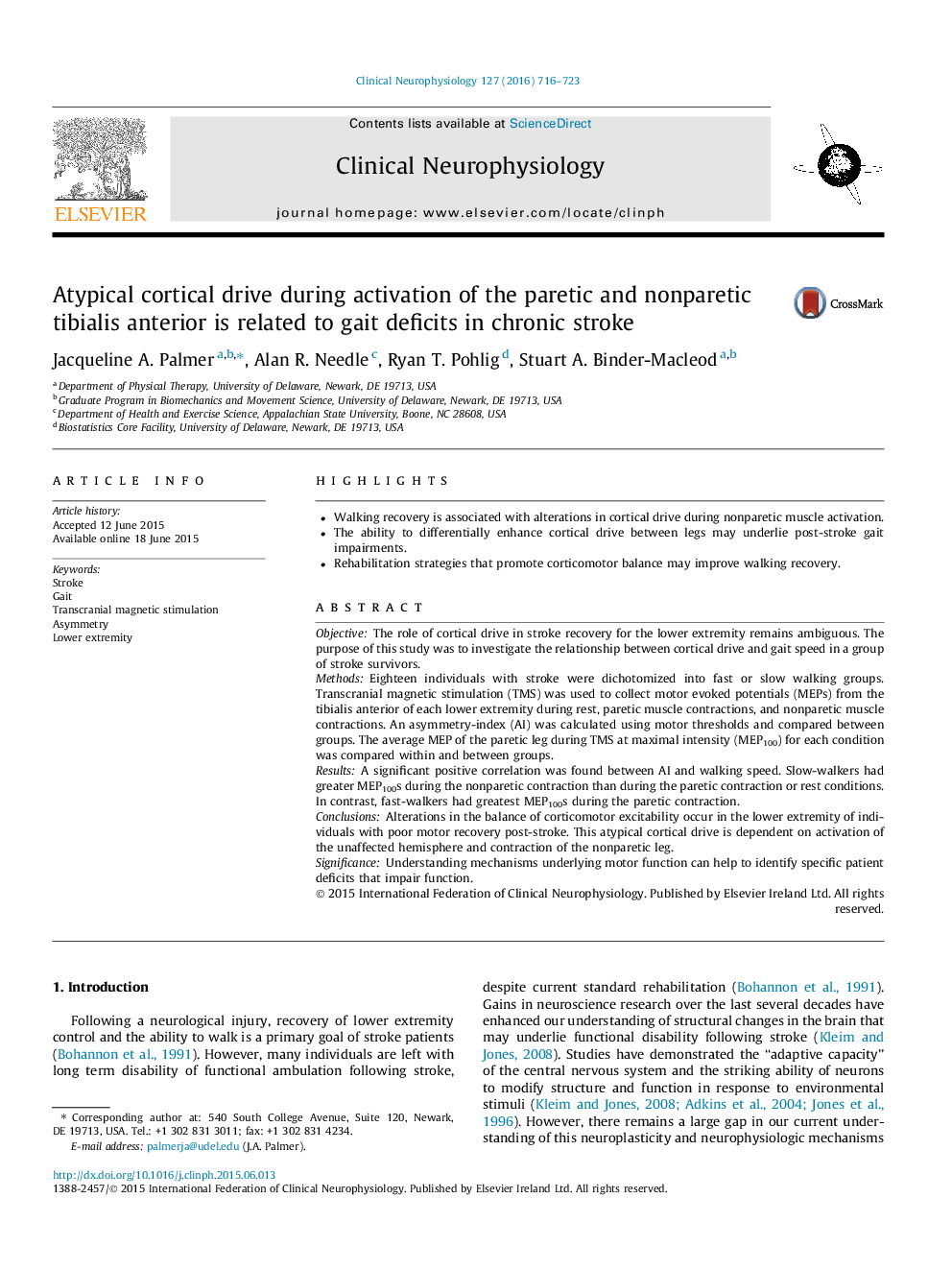| Article ID | Journal | Published Year | Pages | File Type |
|---|---|---|---|---|
| 6007973 | Clinical Neurophysiology | 2016 | 8 Pages |
â¢Walking recovery is associated with alterations in cortical drive during nonparetic muscle activation.â¢The ability to differentially enhance cortical drive between legs may underlie post-stroke gait impairments.â¢Rehabilitation strategies that promote corticomotor balance may improve walking recovery.
ObjectiveThe role of cortical drive in stroke recovery for the lower extremity remains ambiguous. The purpose of this study was to investigate the relationship between cortical drive and gait speed in a group of stroke survivors.MethodsEighteen individuals with stroke were dichotomized into fast or slow walking groups. Transcranial magnetic stimulation (TMS) was used to collect motor evoked potentials (MEPs) from the tibialis anterior of each lower extremity during rest, paretic muscle contractions, and nonparetic muscle contractions. An asymmetry-index (AI) was calculated using motor thresholds and compared between groups. The average MEP of the paretic leg during TMS at maximal intensity (MEP100) for each condition was compared within and between groups.ResultsA significant positive correlation was found between AI and walking speed. Slow-walkers had greater MEP100s during the nonparetic contraction than during the paretic contraction or rest conditions. In contrast, fast-walkers had greatest MEP100s during the paretic contraction.ConclusionsAlterations in the balance of corticomotor excitability occur in the lower extremity of individuals with poor motor recovery post-stroke. This atypical cortical drive is dependent on activation of the unaffected hemisphere and contraction of the nonparetic leg.SignificanceUnderstanding mechanisms underlying motor function can help to identify specific patient deficits that impair function.
